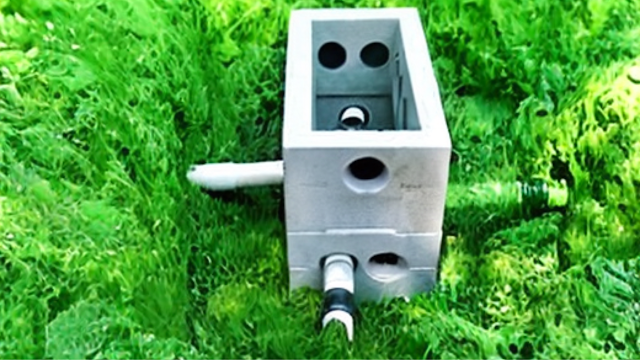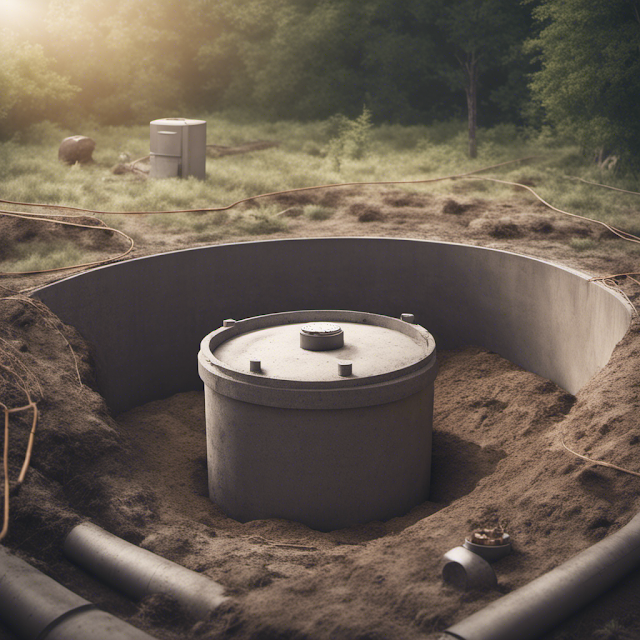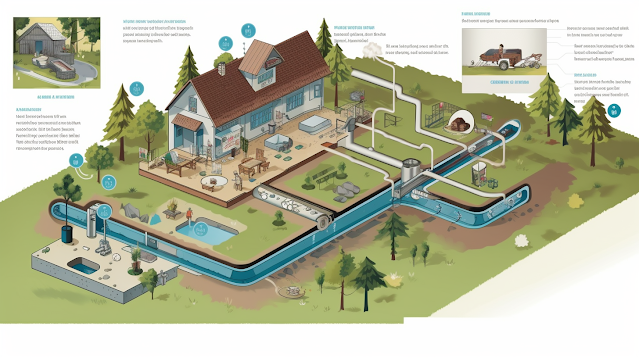Choosing the Right Plants for a Healthy Drain Field
 |
| Choosing the Right Plants for a Healthy Drain Field |
When it comes to maintaining a healthy drain field, choosing the right plants is vital. Planting the wrong ones can lead to costly septic system repairs. To prevent clogs and ensure the longevity of the drain field, it is crucial to select plants with shallow roots that won't intrude into the septic system.
Native plants, like Bermuda grass and butterfly bush, are excellent choices as they are well-suited to the local soil conditions. Avoiding trees with aggressive root systems and non-native invasive plants is also important.
By following proper planting techniques and local regulations, a healthy drain field can be maintained.
Key Takeaways
- Plant the right plants near a drain field to ensure proper functioning and prevent costly repairs.
- Choose plants with shallow roots, like grasses, shrubs, perennials, and groundcovers, to minimize the risk of root intrusion.
- Avoid planting trees with aggressive root systems and non-native invasive plants near drain fields.
- Follow proper planting guidelines, maintain a minimum distance, and regularly monitor the plants near the drain field for signs of overgrowth or root intrusion.
Factors to Consider When Choosing Plants for a Drain Field
When choosing plants for a drain field, it is important to consider factors such as root depth, water requirements, and invasive tendencies.
The soil composition in the drain field plays a crucial role in plant selection. It is essential to choose plants that can adapt to the specific soil conditions in order to promote healthy growth and minimize the risk of damage to the septic system.
Proper maintenance practices are also vital for plants near drain fields. Regular monitoring of the plants for signs of overgrowth or root intrusion is necessary to prevent any potential issues. Additionally, watering and fertilizing the plants as needed will help maintain their health and prevent stress on the drain field.
Benefits of Native Plants for Drain Field Health
Native plants offer several benefits when planted near a drain field. They adapt well to the local soil conditions and minimize the risk of root intrusion, supporting the health of the drain field. This is crucial because proper drainage is essential for the drain field to function properly. By choosing the right plants, homeowners can prevent clogs and ensure the longevity of the drain field. Here are the benefits of using native plants in a drain field:
- Native plants are well-suited to the local soil conditions, allowing for better water absorption and drainage.
- Their shallow root systems minimize the risk of roots intruding into the septic system.
- Native plants are more resilient to environmental stressors, such as drought or extreme temperatures.
- They provide natural mulching, which helps retain moisture in the soil and reduces the need for excessive watering.
Safe Grasses and Shrubs for a Healthy Drain Field
Grasses like Bermuda grass, fescue, and ryegrass, along with shrubs such as butterfly bush, rosemary, and juniper, are excellent choices for ensuring a healthy drain field. These plants have shallow root systems that minimize the risk of root intrusion into the septic system. Additionally, they are well-suited for proper drainage techniques.
Proper fertilization methods should also be considered when planting near a drain field. It is important to choose plants that do not require excessive watering or fertilization, as this can overload the drain field.
Best Perennials and Groundcovers for Drain Field Planting
Creeping thyme, sedum, and vinca minor are low-maintenance groundcovers that are suitable for planting near a drain field. These plants offer numerous benefits for drain field planting, including their ability to prevent soil erosion and reduce weed growth. Additionally, their shallow root systems minimize the risk of root intrusion into the septic system.
To ensure the health of drain field plants, it is important to follow proper maintenance tips. Regularly monitoring the plants for overgrowth or root intrusion is essential. Creating a vegetative buffer zone around the drain field with septic-safe plants can also help protect the system. Furthermore, mulching around the plants provides additional benefits, such as moisture retention and weed suppression.
Trees With Non-Invasive Root Systems for Drain Field Protection
Dogwood and Japanese maple trees are excellent options for protecting the drain field due to their non-invasive root systems. Proper tree selection near drain fields is of utmost importance to maintain the health and functionality of the septic system.
Invasive tree species can have a detrimental impact on drain field health, causing root intrusion and potential damage to pipes and distribution lines. These invasive species, such as willows and poplars, have aggressive root systems that can infiltrate and clog the septic system.
Avoid These Unsafe Plants for Drain Field Planting
Avoid planting invasive species and deep-rooted vegetables near the drain field to prevent potential damage to the septic system. Planting the wrong plants near a drain field can pose significant risks.
Invasive species can quickly spread and infiltrate the septic system, causing clogs and costly repairs. Deep-rooted vegetables, such as carrots and potatoes, can also pose a risk of root intrusion.
Regular maintenance is crucial for plants near a drain field to ensure their health and prevent any damage to the septic system. By regularly monitoring for signs of overgrowth or root intrusion, homeowners can address any issues promptly.
Additionally, following local regulations and guidelines for drain field planting is essential to avoid penalties and ensure compliance. Proper plant selection and regular maintenance are vital for a healthy drain field and the longevity of the septic system.
Frequently Asked Questions
How Often Should I Water the Plants Near a Drain Field?
It is important to water plants near a drain field regularly, but not excessively. The best watering practices involve providing enough moisture to keep the plants healthy, while avoiding overwatering that can overload the drain field.
Can I Plant Fruit Trees Near a Drain Field?
Planting fruit trees near a drain field is not advisable due to their deep root systems. These roots can infiltrate the septic system, causing damage. It's best to choose shallow-rooted plants and avoid planting vegetables in this area. Using compost can provide many benefits for plant growth.
What Are Some Low-Maintenance Groundcovers for a Drain Field?
Low-maintenance groundcovers are ideal for a drain field. They provide erosion control, prevent weed growth, and require minimal care. Native groundcovers offer additional benefits, as they are adapted to the local environment and promote biodiversity.
Are There Any Non-Invasive Flowering Vines That Are Safe to Plant Near a Drain Field?
Non-invasive flowering vines, like clematis and honeysuckle, can be safe to plant near a drain field. However, it is crucial to choose native grasses for their benefits, such as preventing root intrusion and promoting proper septic system functioning.
Can I Use Mulch Around the Plants Near a Drain Field?
Yes, mulch can be used around plants near a drain field. It helps retain moisture, suppresses weeds, and improves soil quality. However, alternative groundcovers like gravel or wood chips can also provide similar benefits.



.png)






Comments
Post a Comment